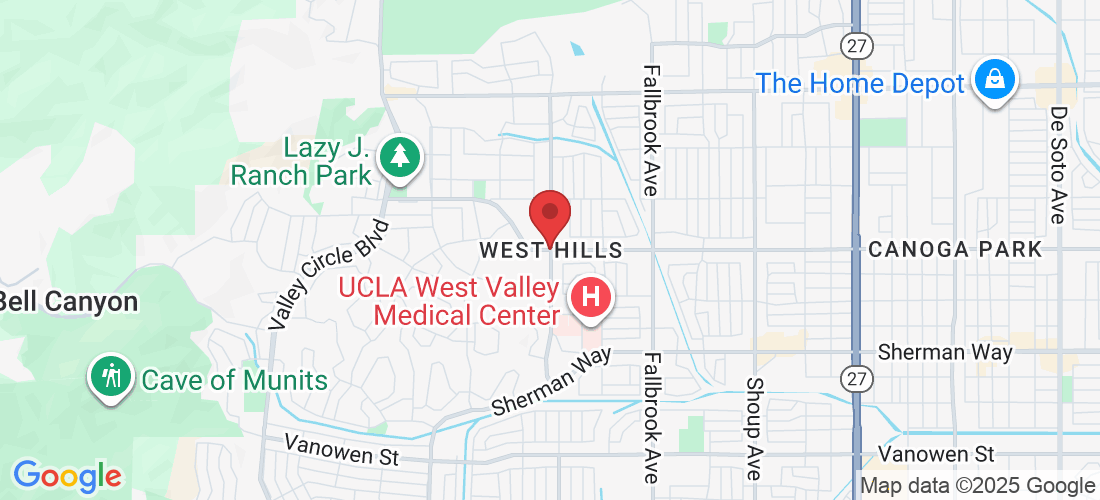Sponsored





Mini Split & Ductless AC Installation in West Hills, CA
Custom Comfort Without The Ductwork—installed By Local Pros
Looking for an efficient way to cool or heat individual rooms? West Hills HVAC specialists offer expert installation of mini split and ductless systems—perfect for homes without ductwork, room additions, or areas needing zoned climate control. Enjoy quiet operation, energy savings, and precise temperature control with help from experienced local installers. Browse top-rated ductless mini split installation services in West Hills and request a custom quote today.
Mini Splits/Ductless Installation – West Hills – Why Hire a Professional Mini Splits/Ductless Installation Service
Quiet comfort, smart zoning, and high efficiency—made easy by West Hills ductless mini‑split pros
What a ductless mini‑split is—and why West Hills homes love them
A ductless mini‑split (often shortened to “mini split”) is a highly efficient heating and cooling system made up of an outdoor condenser and one or more compact indoor air handlers. Instead of pushing air through large ductwork, each indoor head conditions the air directly within the room or zone. For many West Hills households—with additions, ADUs, older homes with limited ducts, home offices, or rooms that never feel quite right—mini splits/ductless installation offers a clean, quiet, and flexible alternative to traditional central HVAC.
Beyond comfort, ductless air conditioning and heating shine when it comes to energy savings. Because you’re conditioning only the spaces you use (zoned comfort) and avoiding duct losses, a professionally designed mini split installation can cut utility costs while improving indoor air quality. The key to unlocking those benefits is expert design and commissioning—not just hanging a wall cassette and calling it a day.
Why hire a professional Mini Splits/Ductless Installation service in West Hills
Choosing a professional installer is the difference between a whisper‑quiet, efficient system and a nagging set of hot/cold spots, short cycling, and surprise repair bills. Certified ductless installers perform room‑by‑room load calculations, match equipment to your layout, size line sets correctly, and set critical parameters during startup. In West Hills, where summer heat and mild winters place unique demands on equipment, a pro knows how to right‑size for peak days without sacrificing shoulder‑season comfort.
Pros also handle the essentials many DIY guides gloss over: vacuuming and nitrogen pressure‑testing the refrigerant lines, flaring and torqueing to spec, verifying condensate pitch and freeze protection, programming thermostat set‑backs, and integrating smart controls. These steps protect your manufacturer warranty and ensure your ductless AC/heat pump reaches its rated SEER2 and HSPF2 performance—something improperly installed systems rarely achieve.
Core benefits of professional ductless mini split installation
1) Precision comfort & true zoning: A professional designs zones that align with how you actually live—primary bedrooms, living areas, home offices—so each space gets just the right capacity. No more over‑cooling the whole house just to make one room livable.
2) Energy efficiency that shows up on the bill: Proper line‑length calculations, charge verification, and airflow tuning make a measurable difference. A certified West Hills mini split installer will dial in fan curves and compressor logic so the system sips energy while maintaining set point.
3) Quiet operation: Wall, floor, and ceiling cassette placement matters. Pros account for throw distance, wall resonance, and return pathways so your system runs whisper‑quiet—even at night.
4) Clean installs & clean air: Professional ductless installation includes condensate management, neat line‑hide routing, and filter guidance. Optional multi‑stage filtration and humidity control can further improve indoor air quality for West Hills’ dry, dusty stretches.
DIY pitfalls that cost comfort and cash
Ductless systems look simple, but skipping critical steps can be expensive. Common do‑it‑yourself errors include undersized or kinked line sets, uninsulated penetrations, improper flares, missed vacuum/pressure testing, and flat condensate runs that cause leaks. Even small refrigerant deviations can slash efficiency and shorten compressor life.
Mounting mistakes also plague DIY mini split installs: cassettes aimed at obstacles, heads installed too high or low for proper air mixing, or outdoor units placed in recirculating corners. Add in mis‑sized branch boxes on multi‑zone systems, and you can end up with rooms that never feel right. A professional Mini Splits/Ductless Installation service in West Hills prevents these headaches with proper design, tools, and testing.
How a West Hills pro designs your ductless system
The process starts with a detailed survey: room dimensions, window orientation, insulation levels, leakage points, and existing electrical capacity. Your installer performs load calculations for each zone, then recommends single‑zone or multi‑zone configurations (e.g., one outdoor unit serving several indoor heads). They’ll choose wall, floor, or ceiling cassettes based on ceiling height, furniture layout, and aesthetics.
Next comes routing: selecting the shortest, neatest line‑set path; protecting penetrations; planning condensate drains with the right slope; and choosing line‑hide channels that blend with your exterior. On multi‑story homes or ADUs, pros prevent oil traps and ensure proper lift for long vertical runs—details that keep capacity and compressor health intact.
What to expect on installation day
A professional ductless installation follows a proven sequence: set mounting plates, core‑drill penetrations, route insulated line sets and control wiring, install drain lines with backflow prevention, set and level the outdoor unit on a pad or wall brackets, make flared connections to spec, and pressure‑test with nitrogen. After a deep vacuum to remove moisture and air, the system is opened to refrigerant, leak‑checked, and commissioned.
Commissioning includes verifying superheat/subcool values, balancing fan speeds, setting quiet/night modes, calibrating thermostats, and walking you through maintenance and app controls. Before the team leaves, you’ll see stable temperatures, proper condensate drainage, and documented readings that prove your new mini split/ductless installation is performing as designed.
Selecting equipment: capacity, efficiency, and head styles
For West Hills homes, capacity is typically expressed in BTUs per zone. A pro sizes each indoor unit to the room’s load—big enough to meet peak afternoons, but not so large that it short‑cycles on mild days. Efficiency is reflected in SEER2 (cooling) and HSPF2 (heating). Higher numbers mean lower operating costs, especially when paired with inverter‑driven compressors that modulate smoothly rather than blasting on/off.
Head choices include sleek wall cassettes, low‑profile floor consoles (great for knee‑wall rooms), and ceiling cassettes that deliver a more central‑air feel. Your installer will also consider filters, optional UV or plasma accessories, and control strategies—single remote per zone, centralized wall controller, or smart‑home integration.
Electrical, placement, and weather considerations
Ductless systems need dedicated electrical circuits sized to the equipment’s MCA/MOP ratings. A professional coordinates panel capacity, breaker size, disconnects, whip lengths, and surge protection. For outdoor placement, pros avoid alcoves that trap hot exhaust, maintain clearances for airflow and service, and plan for sun exposure and debris. In West Hills, seismic bracing, condensate freeze protection (for heat‑pump models), and vermin‑proofing of penetrations can all be part of a thoughtful install.
Indoors, head placement is optimized for throw distance and sensor accuracy. The goal is even mixing without blasting occupants or short‑circuiting return paths. This is where an experienced mini split installer’s eye makes a visible difference every day you use the system.
Costs, value, and long‑term ROI
Upfront price depends on the number of zones, head styles, line‑set lengths, electrical upgrades, and wall/ceiling conditions. While professional Mini Splits/Ductless Installation can cost more than a bare‑bones DIY kit, the delivered value—comfort, verified efficiency, warranty protection, and clean aesthetics—pays back for years. Zonal control means you’re not conditioning rooms you don’t use, and inverter technology keeps energy use low during mild West Hills evenings.
Many homeowners also see value in improved indoor air quality, quieter bedrooms, and precise humidity control. When you factor fewer service issues from day‑one mistakes, the professional route becomes the economical route.
Maintenance made simple (and why pro tune‑ups matter)
Ductless systems are easy to live with: rinse or vacuum filters every month or two (more often if you have pets), keep the outdoor coil free of debris, and schedule pro tune‑ups before peak seasons. During service, a technician checks refrigerant parameters, cleans coils, verifies condensate, updates firmware where applicable, and confirms sensor accuracy. These quick visits preserve efficiency, keep heads quiet, and catch small issues—like a slow drain or aging capacitor—before they become outages.
Many West Hills installers offer maintenance plans that bundle priority scheduling, discounted parts, and annual performance checks. If you rely on your ductless system for both cooling and heating, those visits are your low‑cost insurance policy.
Mini splits vs. window units vs. extending ductwork
Extending ducts into an addition can be invasive and sometimes pushes a central system beyond its limits. Window and portable ACs are easy to plug in—but they’re noisy, less efficient, and compromise security. Professional Mini Splits/Ductless Installation delivers the sweet spot: permanent, quiet, super‑efficient comfort with clean lines and smart controls, without a full‑house renovation.
For ADUs, garage conversions, or bonus rooms, a single‑zone mini split is often the fastest path to code‑ready, thermostat‑precise comfort. For whole‑home solutions, multi‑zone systems let you tailor comfort room by room—and expand later if your needs change.
Red flags when choosing a ductless installer
Watch out for bids that skip a site visit, propose “one‑size‑fits‑all” equipment, or won’t provide commissioning data. If an estimate ignores electrical upgrades, line‑set routing, or condensate strategy, expect change orders later. A reputable West Hills Mini Splits/Ductless Installation service will share load calcs, layout options, and a clear scope—including patch/paint responsibilities, permits when required, and warranty details for both equipment and labor.
Ask about factory training, certifications, and experience with your preferred brand’s multi‑zone products. The right partner stands behind the work, offers post‑install support, and answers your questions without jargon.
Frequently asked questions (West Hills edition)
Will a single head cool my whole house? Usually not. Mini splits excel at zoned comfort. You’ll get the best results by matching heads to the rooms you use most, or by selecting a multi‑zone layout for whole‑home coverage.
Are ductless systems only for cooling? Most modern mini splits are heat pumps that both cool and heat efficiently—perfect for West Hills’ mild winters and cool nights.
How long does installation take? A straightforward single‑zone often wraps in a day; multi‑zone projects can take longer depending on line‑set routing and electrical work. Your professional installer will give a clear schedule and keep the workspace tidy.
What about looks? Today’s heads are slim and stylish, with line‑hide covers outside to keep things neat. Ceiling cassettes and ducted “mini‑duct” air handlers offer even more discreet options.
Bottom line: for Mini Splits/Ductless Installation in West Hills, go pro
If you want the full promise of ductless—pin‑drop quiet, ultra‑efficient comfort, smart zoning, and reliable year‑round performance—hire a professional Mini Splits/Ductless Installation service. From design and electrical to refrigerant science and clean finish work, a seasoned West Hills team turns great equipment into a great experience. Your home (and your energy bill) will feel the difference every day.
Ready to explore options? Start with a consultation that includes room‑by‑room loads, layout choices, and a transparent scope. With the right partner, your ductless mini split installation will look sharp, perform flawlessly, and keep your West Hills spaces perfectly comfortable—season after season.
Air Conditioning Contractor

Google: 5.0 stars
AC Repair, Air Conditioning Installation, Heating and Cooling, HVAC
+18186487515
8023 Limerick Ave, Winnetka, CA 91306
Website: https://supreme-mechanical.com/
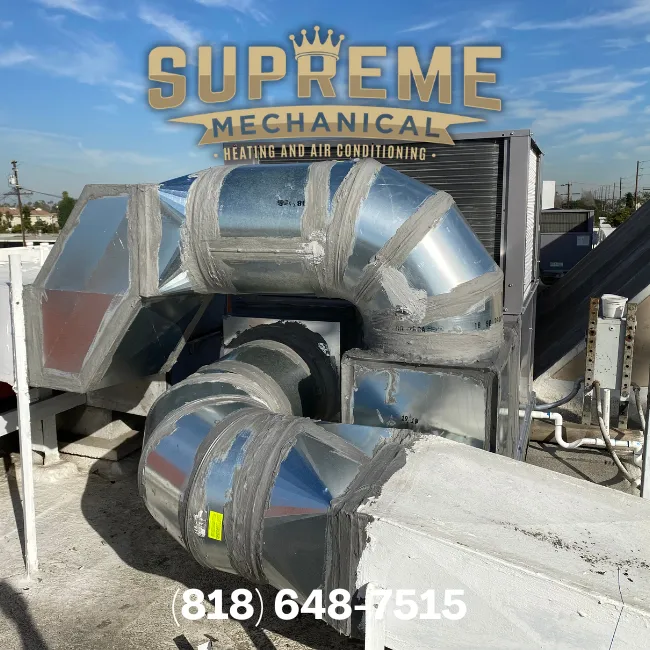
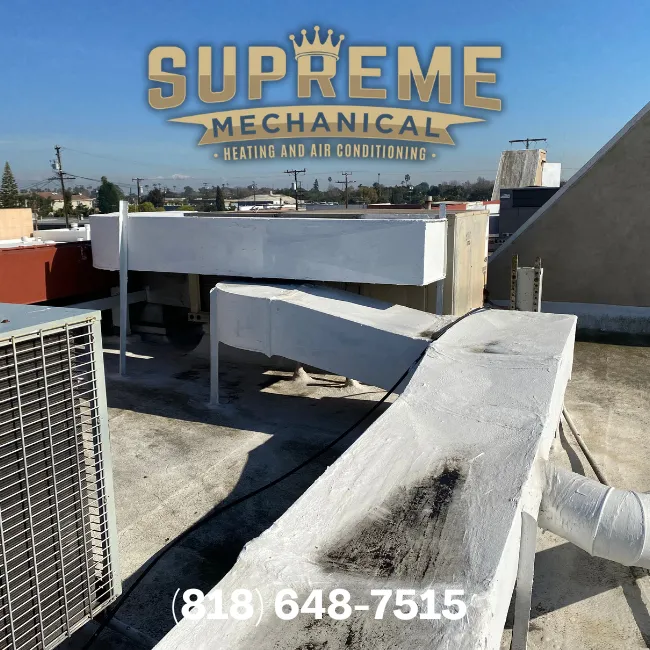

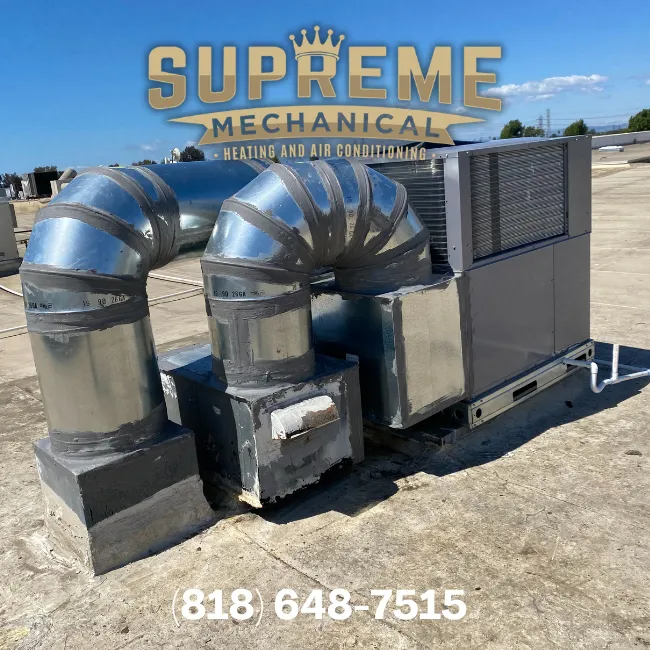
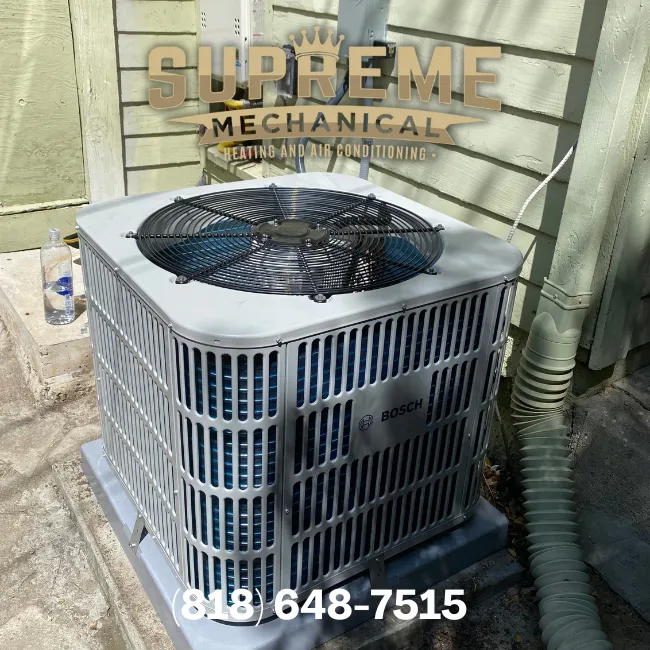
AC Repair & Heating West Team
Google: 4.7 stars (22 reviews)
Services: Air conditioning repair service
📞 (747) 347-4593
📍 8300 Valley Circle Blvd C, West Hills, CA 91304
Open 24 hours
ECO Heating & Cooling Inc.
Google: 5 stars (16 reviews)
Services: HVAC contractor
📞 (818) 584-1898
📍 8601 Santa Susana Pl, West Hills, CA 91304
Hours: Sunday: 8 AM - 7 PM, Monday to Thursday: 8 AM - 7 PM, Friday: 8 AM - 5 PM, Saturday: Closed
Innovative Air & Heating Repair
Google: 5 stars (3 reviews)
Services: HVAC contractor, Heating contractor
📞 (747) 285-0972
📍 23781 Burton St, West Hills, CA 91304
Hours: Monday, Wednesday to Friday: 7:30 AM - 6 PM, Saturday: 8 AM - 4 PM, Sunday and Tuesday: Closed
Andre’s Air Conditioning
Google: 5 stars (36 reviews)
Services: HVAC contractor
📞 (818) 853-9091
📍 23294 Haynes St, West Hills, CA 91307
Open 24 hours
Mini Split Installation West Hills
Efficient ductless systems tailored for any space.
Book your mini split installation in West Hills today for zoned comfort and savings!
A ductless mini-split system is a type of HVAC system that provides heating and cooling without the need for traditional ductwork. It consists of an outdoor condenser and one or more indoor air handlers mounted on walls or ceilings. Refrigerant lines and electrical wiring connect the units through a small wall opening. Mini-splits are ideal for single rooms, home additions, or areas where installing ducts is difficult. They offer efficient, zoned comfort and are known for quiet operation, ease of installation, and energy savings. Many models also feature advanced filtration and smart controls.
Mini-split systems offer numerous advantages, including energy efficiency, zoned climate control, and ease of installation. Because they don’t rely on ductwork, there's minimal energy loss—making them more efficient than traditional forced-air systems. They’re perfect for homes without existing ducts, additions, converted garages, or rooms with uneven temperatures. Each indoor unit can be controlled independently, which reduces energy waste and allows personalized comfort. They also operate quietly and feature sleek, modern designs. Additionally, some models offer both heating and cooling, making them a versatile year-round solution.
Mini-split installation involves mounting the indoor unit(s) on a wall or ceiling and connecting them to an outdoor condenser via refrigerant and electrical lines. A small hole (typically 2–3 inches) is drilled in the wall to run the lines. No ductwork is needed, which simplifies the process and reduces labor costs. The outdoor unit is placed on a stable surface like a concrete pad or wall bracket. Professional installers ensure proper sizing, placement, and refrigerant handling. Most installations can be completed in one day, depending on the number of zones and accessibility of the space.
Mini-split systems can support a single room or multiple zones, depending on the model and layout. A single-zone system connects one indoor unit to one outdoor unit, ideal for individual spaces like bedrooms or offices. Multi-zone systems can connect several indoor units (typically 2–5) to a single outdoor condenser. Each indoor unit operates independently, providing customized temperature control for different rooms or areas. The exact number of zones depends on the capacity of the outdoor unit and the heating/cooling needs of each space. A qualified HVAC professional can design the system to match your home’s layout.
Yes, ductless mini-splits are highly energy-efficient. They avoid the energy losses associated with ductwork—especially in older homes where ducts may be poorly insulated or leaky. Many models feature inverter-driven compressors, which adjust speed based on demand rather than constantly cycling on and off. This leads to smoother operation, better temperature control, and lower energy consumption. Mini-splits also allow for zoned heating and cooling, so you only condition the rooms you’re using. Look for systems with ENERGY STAR® certification for maximum efficiency and potential eligibility for utility rebates or tax incentives.
Routine maintenance for mini-split systems includes cleaning or replacing air filters every 4–6 weeks, especially in high-use areas. The indoor unit’s coils, vents, and fan should be inspected and cleaned periodically to ensure efficient airflow. The outdoor condenser should be kept clear of leaves, dirt, and debris. Annual professional servicing is recommended to check refrigerant levels, electrical connections, and overall system performance. Keeping the system clean not only improves efficiency but also extends its lifespan and maintains good indoor air quality.
With proper installation and regular maintenance, ductless mini-split systems typically last 12 to 20 years. Lifespan can vary depending on usage, climate conditions, and the brand of the equipment. Indoor and outdoor units should be inspected annually by a licensed technician to keep them running efficiently and catch small issues before they escalate. Replacing filters, cleaning coils, and protecting the outdoor unit from weather damage can help maximize longevity. Investing in quality equipment and regular upkeep will ensure long-term comfort and performance.
Yes, in most jurisdictions, installing a mini-split system requires a permit—especially if electrical wiring or refrigerant handling is involved. Local building codes often mandate inspections to ensure safety and compliance. A licensed HVAC contractor will typically handle the permit application and coordinate the inspection process. Proper permitting not only ensures code compliance but also protects you when selling your home or making warranty claims. Always check with your local municipality or contractor before starting an installation project.
West Hills: A Quiet Suburban Retreat
Family-friendly living with natural beauty
Tucked away in the western part of the San Fernando Valley, **West Hills** is a peaceful suburban community that offers a slower pace of life while still being close to major city amenities. With tree-lined streets, scenic views, and a strong sense of community, West Hills is a perfect place for families and those looking for a quiet escape.
Rich in Natural Beauty
West Hills is known for its natural beauty, with several parks and open spaces providing residents with ample opportunities to enjoy the outdoors. **Shadow Ranch Park** offers playgrounds, sports courts, and picnic areas, while **El Escorpión Park** is ideal for hiking and exploring. The area’s rolling hills and green spaces make it a haven for nature lovers.
A Strong Sense of Community
Despite its quiet, suburban vibe, West Hills is known for its active and engaged community. Local events, such as outdoor movie nights, farmers' markets, and holiday festivals, bring neighbors together and create a welcoming atmosphere. The **West Hills Neighborhood Council** plays a significant role in community planning and maintaining the area’s charm.
Educational Opportunities
West Hills is home to several highly rated schools, making it a popular choice for families. **Chaminade College Preparatory** and **El Camino Real Charter High School** are just a couple of the top educational institutions in the area, offering excellent academic programs and extracurricular activities.
Shopping and Dining
Residents of West Hills have access to a variety of shopping and dining options, from local boutiques to larger shopping centers. **Westfield Topanga & The Village**, located nearby, offers high-end retail stores, casual dining, and entertainment options. The neighborhood also has several local cafes and restaurants that add to its small-town charm.
Convenient Commuting
West Hills offers a tranquil lifestyle without sacrificing convenience. The **101 Freeway** is easily accessible, providing a quick route to other parts of Los Angeles. Public transportation options are also available, making commuting simple for residents who prefer not to drive.
Maintaining Comfort in West Hills Homes
With the warm Southern California climate, having a reliable air conditioning system is crucial in West Hills. For homeowners who need **AC repair near West Hills**, there are local professionals ready to help. Keeping your air conditioning system in top shape ensures that your home stays cool and comfortable, especially during the hot summer months.
If you’re experiencing issues with your air conditioning system, don’t wait. Contact a trusted **AC repair service near West Hills** to keep your home comfortable all year round.
References: Wikipedia


